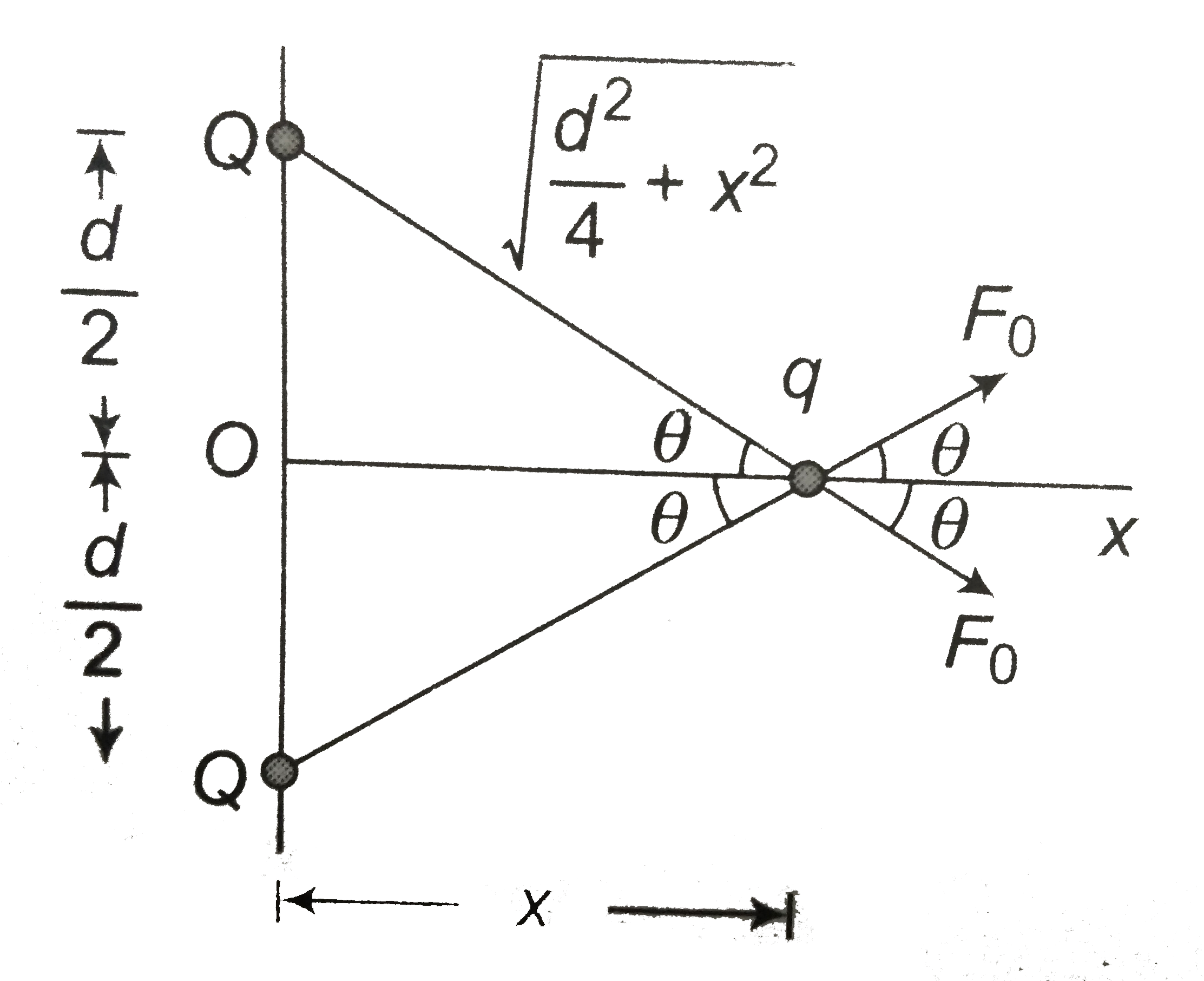Two particles , each having a charge Q, are fixed at y=d/2 and y=−d/2. Where should a particle of charge q be placed on x-axis from origin so that it experiences maximum force and what is it equal to ? Sketch variation of electric force experienced by qv/sx.
Force on q to each Q will be same in magnitude
F0=14π∈0Qq(d24+x2)
Resultant force on q,
F=2F0cosθ
=2.14π∈0Qq(d24+x2)x(d24+x2)1/2
=Qq2π∈0x(d24+x2)3/2
For F to be maximum,
dFdx=0
Qq4π∈0(d24+x2)3/2.1−x.32(d24+x2)1/2.2x(d24+x2)
d24+x2−3x2=0
x2=d28
x=±d2√2
Fmax=Qq2π∈0d2√21(d24+d28)3/2
=Qq2π∈0d2√213d28.√3d2√2
=4Qq3√3π∈0d2
Fv/sx graph : when q is at right of O , force on it will be along +x axis (assuming +ve) , graph will above x-axis.
When q is the left of O, force will be along-x-axis (assuming −ve) , graph will be below x-axis.
x=0,F=0
x=±d2√2,F=Fmax
x→∝,F→0


Topper's Solved these Questions
Similar Questions
Two particles A and B having equal charges are placed at distance d apart. A third charged particle placed on the perpendicular bisector at a distance x will experience the maximum Coulomb’s force when :
View SolutionTwo particles A and B having equal charges are placed at distance d apart. A third charged particle placed on the perpendicular bisector at a distance x will experience the maximum Coulomb’s force when :
View Solution
Knowledge Check
Two charges q and −3q are placed fixed on x-axis separated by distance d. Where should a third charge 2q be placed such that it will not experience any force ?
Ad2(1+√3) to the left of qBd2(1+√3) tothe right of qCd2(1+√5) to the left of qDd2(1+√5) to the right of q
Two charge q and –3q are placed fixed on x–axis separated by distance d. Where should a third charge2q be placed such that it will not experience any force ?

View SolutionTwo charge q and –3q are placed fixed on x–axis separated by distance d. Where should a third charge2q be placed such that it will not experience any force ?

View SolutionTwo charges q and 3q are placed fixed on x-axis separated by distance 'd'. Where should a third charge 2q be placed such that it will not experience any force ?
View SolutionTwo charges q and -3q are placed fixed on x-axis separated by distance d. where should a third charge 2q be placed such that it will not experience any force?
View SolutionTwo charges Q and -3Q are placed fixed on x-axis separated by a distance 'd' Where should a third charge 2Q be placed such that it will not experience any force?
View SolutionTwo charges q and −3q are placed fixed on x-axis separated by distance d. Where should a third charge 2q be placed such that it will not experience any force ?
View SolutionTwo particle of equal mass m and charge q are placed at a distance of 16 cm. They do not experience any force. The value of qm is
View Solution
